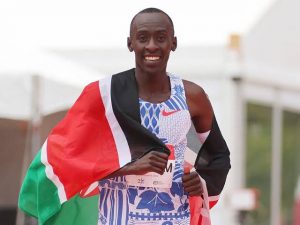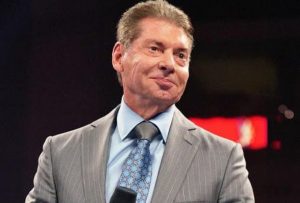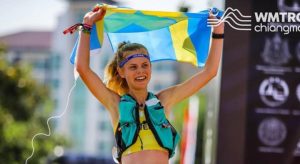From one athlete at the Paris Olympics 1900 to 126 at the Tokyo Olympics 2020, India has covered a long distance, many disappointments, a few celebrations, and a lot of politics. In 121 years, the country of 1.3 billion people has won just 35 medals – 10 golds (eight by the Indian men’s hockey team), eight silvers (one by the Indian men’s hockey team), and 18 bronze medals.
Also read: Paris Olympics: All you need to know about 2024 games
Sports in pre-Independence India was defined primarily by its hockey team, which dominated the Olympics from 1928 to 1936 winning an unprecedented three titles. Very few athletes were part of the Indian Olympics delegations till then, but from 1948, an independent India began sending more than 50 athletes, selected by various sports federations, which comprised people mostly from non-sports backgrounds. Before the 1952 Summer Games in Helsinki, the Indian field hockey team was the only saviour with their consistent Gold performance. In 1952, wrestler Khashaba Dadasaheb Jadhav won a bronze medal to become India’s first individual Olympic medallist in the men’s freestyle bantamweight category. Did he get government support? Reportedly, he did not even get a place in the squad till he wrote to the Maharaja of Patiala, who was a patron of wrestling. The Maharaja, who had a say in the selection process, convinced the authorities to hold a qualifying bout again and it was in this fight that Jadhav secured his ticket to the Olympics. He fought hard and turned that into a place in history for himself, and for India.
Also read: 100 years, 3 stories, 1 dream: Neeraj Chopra’s win is more than just a gold
The Indian men’s hockey team, which did not settle for anything but gold till 1956, lost in the 1960 Summer Olympics finals and had to settle for a silver medal. Though the team briefly bounced back by winning gold at the 1964 Summer Olympics, it had to make do with bronze medals in the next two Olympics. In the 1976 Summer Olympics India went home empty-handed, the first time since 1928. The champions made a comeback winning their Olympic record eighth at the Moscow Games in 1980. The drought after that lasted 41 years, till the hockey bronze won this week in Tokyo.

Since 1980, India has won 21 total medals, seven of those at the Tokyo games that wrap up today. It’s India’s best performance ever, besting the haul at London 2012 when we had won six, but no gold. The only individual gold before Neeraj Chopra’s champion javelin throw earned him one on Saturday, was shooter Abhinav Bindra’s in 2008.
Also read: From 1900 to 2021: Brief history of India’s Olympic medal victories
Every four years — in this case, five due to the pandemic — the same questions are asked in India. Why does India fail to excel at the Olympics? And does it even matter to the government? Does it even matter to authorities? Does it even matter to countrymen?
Prime Minister Narendra Modi, who is keen to establish India as a global superpower, has probably decided that it does matter. After India performed miserably at the 2016 Games in Rio de Janeiro — one silver and one bronze — PM Modi constituted a ‘task force’ to prepare the roadmap for the next three quadrennial Games — 2020 (Tokyo), 2024, and 2028. The aim of the task force was to prepare a strategy for the improvement of facilities, selection norms, and better training facilities. The task force included the likes of national badminton coach Pulella Gopichand, Former India hockey captain Viren Rasquinha, and foreign experts as well.
Also read: A glance at the big stories of the Games
Soon after creating the task force, the government began funneling money to sports authorities that were underfunded for decades and stained by corruption. Private ventures stepped in, training elite athletes hoping to harness their upward trajectory. The state money also trickled into grassroots sports, which resulted in exceptional performances by athletes from deep pockets in India.
Also read: Countless Neeraj Chopra stories from his humble Haryana village
This shift in the stand didn’t happen overnight. PM Modi, even before taking oath for the top office, had on several occasions spoken about the need to link sports with the education system in the country. In 2013, during a speech in Ferguson College in Pune, he said, “During Olympics, people often say despite its huge size, we don’t get medals. Have we linked sports with our education system? Did we give enough opportunity to our youth…? Believe me, if you give our defence forces this responsibility and match the potential of the new recruits in the interested sports and then train them properly, we will earn 5-7 medals even without much effort. It requires vision!” Did he walk the talk? Looking at India’s medal tally at the Tokyo Olympics, maybe he did.
Also read: Winter Olympics 2022: All you need to know about the upcoming Beijing games
Why didn’t PM Modi push for the Rio Olympics 2016?
Training for an Olympics mindset alone takes years and a lot of administrative support. When PM Modi took over in 2014, the die was cast for Rio. It was only in February 2015, nine months after Sarbananda Sonowal took charge, that the Sports Ministry, keeping in mind the Olympics, launched its ambitious ‘Mission Olympic Cell’ headed by the director-general, Sports Authority of India (SAI) to monitor the preparation of athletes who had qualified for Rio. The athletes were given support under the Target Olympic Podium Scheme(TOPS) using the National Sports Development Fund (NSDF). But several athletes wanting government aid were tripped by the dreaded ‘red-tape’.
Abhinav Bindra, India’s first Olympic gold medalist in an individual competition, told The New York Times that the sports environment today is different from when he won the 10-meter air rifle competition in Beijing. He said when he competed in the shooting nationals at 24 there were 200 entrants and these days the competition draws 20,000, plus another 20,000 who didn’t make the cut.
Also read: India at Olympics: List of athletes who missed out on medal by a whisker
Eight members of the Indian shooting team in Tokyo, he noted, have been world No. 1s or 2s in their categories. “It could be the start of a new era in Indian sport,” Bindra said.
A beginning of the change?
For PM Modi, who met each and every athlete from this year’s Olympic contingent, it looked like a personal stake. The training given to the athletes this time was far better than ever. The coronavirus pandemic did distract the players but not much, who continued with their training at all times
Gold medallist Neeraj Chopra, who comes from a humble background, was trained in Europe. “As far as preparations for @Tokyo2020 are concerned, all my requirements have been taken care of in the best possible way. I’m training in Europe currently and am thankful for the efforts made by the government and the Indian embassy, despite the tough visa rules,” he tweeted in June.

India’s star weightlifter Mirabai Chanu, who is a part of the TOPS, was sent to the US for training until the Tokyo Games. The Sports Authority of India Mission Olympic Cell (MOC) had sanctioned around Rs 70.8 lakhs for Chanu’s one-and-a-half-month long overseas training, PTI reported, quoting a SAI source.
Medal winner Bajrang Punia, who once used to struggle to play on the mat, was sent to the US, Russia for the Olympics training. And, he did deliver.

Also read: With 7 medals, India put on their best-ever show at the Olympics
In a first, the Indian women’s hockey team scripted history by entering the semi-finals of the Games for the first time. Though they couldn’t win the medal but gave tough fights to their opponents. The men’s hockey team won the bronze medal after a gap of 41 years.

The Olympics task force was mandated to show results in the three quadrennial Games — 2020 (Tokyo), 2024, and 2028. The performances this year have given Indians hope to see medals in double digits on the next two occasions.
Is this the “spirit of New India”, as PM Modi says, and a beginning of the better and dominant phase for Indian sports?






